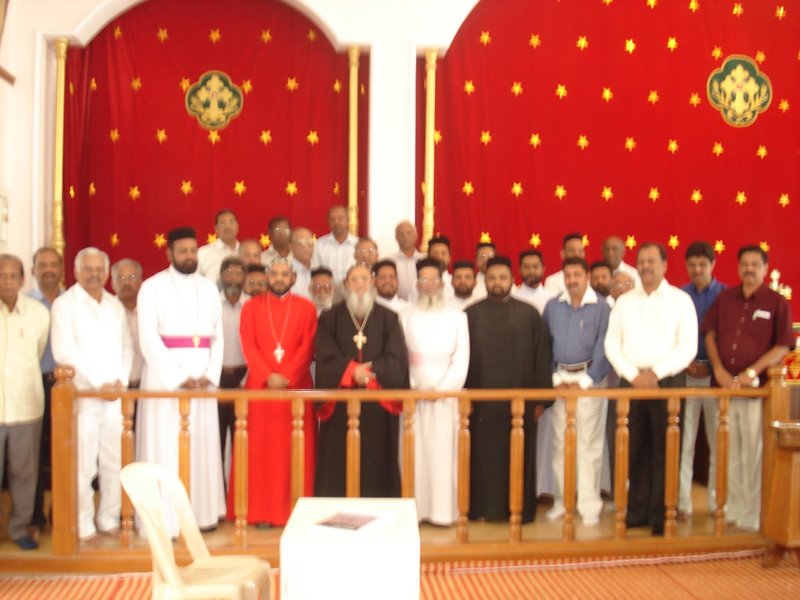- Home
- About Us
About Bangalore Diocese
The Jacobite Syrian Christian Church is one of the oldest Christian communities in the world. Its history dates back to the time of St. Thomas the Apostle, who is believed to have arrived in India in AD 52 to spread the message of Jesus Christ. Over the centuries, the faith grew and took root in different parts of India, especially in Kerala. As the community expanded, members moved to other states, including Karnataka, leading to the formation of the Jacobite Syrian Christian Church Bangalore Diocese.
The Bangalore Diocese was established to bring together the faithful living in Karnataka under one spiritual leadership. This diocese falls under the Holy Apostolic See of Antioch and All the East, which is the spiritual head of the worldwide Jacobite Syrian Christian Church. The diocese works towards maintaining the rich traditions, customs, and liturgical practices handed down through generations.
Today, the Bangalore Diocese has several active parishes across the city and nearby areas. These churches serve as spiritual homes for the community, offering Holy Qurbana, Sunday School, youth programs, charity activities, and other religious services. The diocese also actively promotes social service, supporting the needy through education, medical help, and humanitarian projects.

The Jacobite Syrian Christian Church is known for its unique liturgy, which is conducted in Syriac, Malayalam, and English. It beautifully blends ancient traditions with modern-day practices, ensuring the faith remains strong and relevant for the younger generation. The Bangalore Diocese, with its committed clergy and devoted members, continues to uphold the timeless values of love, peace, and service to humanity.

The Syriac Orthodox Church is quite unique for many reasons. Firstly, it presents a form of Christianity, which is Semitic in nature, with a culture not far from the one Christ himself experienced. Secondly, it employs in its liturgy the Syriac language, an Aramaic dialect akin to the Aramaic spoken by Christ and the Apostles. Thirdly, its liturgy is one of the most ancient, and has been handed from one generation to another. Fourthly, and most importantly, it demonstrates the unity of the body of Christ by the multiethnic nature of its faithful: A visit to your local Syriac Orthodox Church in Europe or the Americas would demonstrate, for example, the blend of Near Eastern and Indian cultures in the motifs and vestments of clergy. The Syriac Orthodox faithful today live primarily in Middle Eastern countries and the Indian State of Kerala, with many communities in the diaspora.
The Syriac Orthodox Church has been a member of the World Council of Churches since 1960, and is one of the founding members of the Middle East Council of Churches. The Church takes part in ecumenical and theological dialogues with other churches. As a result of these dialogues, the Church has issued two joint declarations with the Roman Catholic Church and another with the Eastern Orthodox churches.
In Syriac, the proper name of the Church is `idto suryoyto treeysath shubho. In the past, the name of the Church had been translated to English as “Syrian Orthodox Church”. The Holy Synod of the Church approved the translation “Syriac Orthodox Church” in its session of March 28-April 3, 2000.
Church Hierarchy
The supreme head of the Syriac Orthodox Church is the Patriarch of Antioch and all the East. He also presides over the Holy Synod, the assembly of all bishops.
The local head of the church in Malankara (India) is the Catholicos of the East. The Catholicos is under the jurisdiction of the Patriarch of Antioch and is accountable to the Holy Synod and the local Malankara Synod. He is consecrated by the Patriarch and presides over the local Holy Synod.
The local head of every archdiocese is an archbishop. He is under the jurisdiction of the Patriarch and is accountable to the Holy Synod. The archbishop is ordained by the Patriarch and at least two bishops. Some archdioceses are ‘patriarchal vicarates’; the patriarchal vicar, regardless of ecclesiastical office, is accountable directly to the Patriarch.

Each parish is assigned a vicar. He is under the direct jurisdiction of his archbishop and is directly accountable to him. The parish is run by a board of trustees (or a committee) which is elected by the parishioners and approved by the archbishop.
Deacons assist the priest in the administration of the liturgy. Each archdiocese may have one archdeacon who is called “the right hand of the bishop.” Only qualified and learned deacons are elevated to this office.
There are Three Ranks of Priesthood in the Syriac Orthodox Church:
Episcopate
Within it there are the ranks of Patriarch, Catholicos, archbishop, and bishop.
Vicarate
Within it there are the ranks of chor-episcopos and priest or qasheesho.
Deaconate
Within it there are the ranks of archdeacon, evangelical-deacon, subdeacon, lector or qoruyo and singer or mzamrono.

